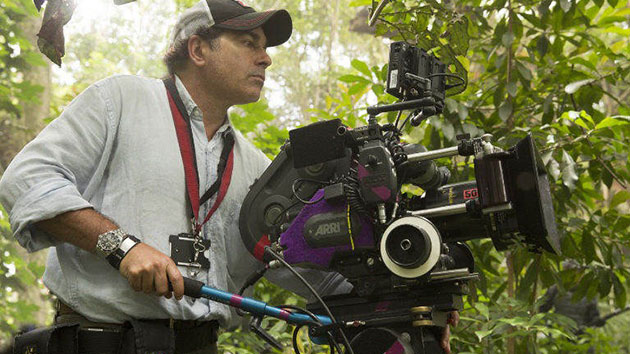How and Why It Was Shot on Film, the Decision to Capture 2D Instead of 3D, and the Technical Challenges of Making a Blockbuster in the Jungles of Hawaii
Irony wrapped in serendipity surrounds the fact that cinematographer John Schwartzman, ASC, ended up shooting Jurassic World in collaboration with director Colin Trevorrow under the watchful eye of the man who created the dino-franchise—producer Steven Spielberg, director of the original film that the new movie directly links itself to, 1993’s Jurassic Park. The irony comes out of the fact that Schwartzman was originally hired when the new film was first slated to be acquired in native 3D, since “in terms of resume, I had as much experience as anyone in shooting such films,” given his pedigree shooting The Amazing Spider-Man (2012) in native 3D and re-shoots for Life of Pi, also in native 3D, that same year.
Serendipity cropped up when Spielberg and Trevorrow decided in 2013 that the project should be delayed and reconstituted. During that delay, Schwartzman convinced them that the material was not suited to native stereo acquisition after all. Among his reasons was the fact that he also had reams of experience shooting in jungle settings in Hawaii and elsewhere on films like Pearl Harbor (2001), a location where much of this film was shot. Schwartzman felt strongly that “3D in the jungle raises the level of complexity quite a lot” and “momentum will be a word that will not be in your vocabulary.”
Instead, in keeping with his, Trevorrow’s, and Spielberg’s ideal aesthetic preferences, and in the tradition of the other Jurassic Park movies, Schwartzman ended up shooting the picture on film, in a blend of 35mm and 65mm formats, and in a highly unusual 2.00:1 aspect ratio. (The IMAX 3D version of the movie was later created in post using the Stereo D conversion process.)
In a recent chat, Schwartzman explained these and other decisions, and how they were executed during production on Jurassic World for the first of Studio’s new Podcasts From the Front Lines series of conversations with filmmakers involved with major feature films debuting this year. Watch the video, below.
Sections: Creativity
Topics: Podcast Podcasts from the Front Lines Project/Case study Cinematography john schwartzman
Did you enjoy this article? Sign up to receive the StudioDaily Fix eletter containing the latest stories, including news, videos, interviews, reviews and more.

Excellent! Found it highly educational and stimulating. This interview, obviously, was done before the film’s release. Its unprecedented box office should have delighted them.